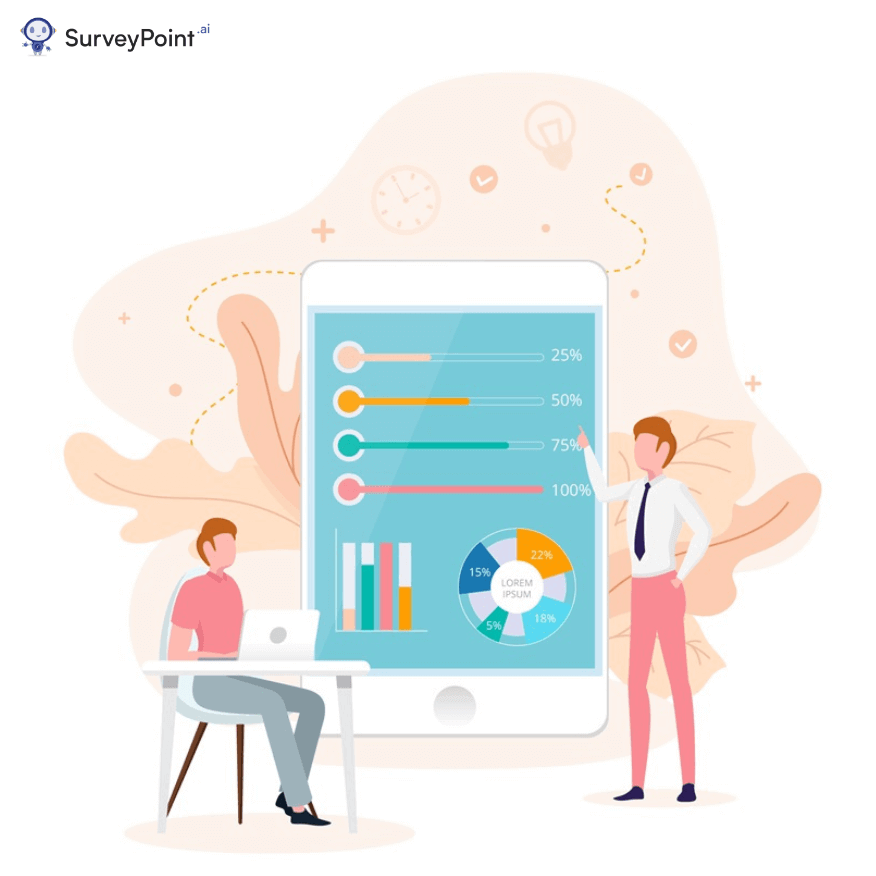
Are you ready to unlock the power of information gathering and take your data collection skills to new heights? In this digital era of fast-paced competition, businesses are going wild with their data collection game to outperform each other and convert prospects into profits.
It would not be an exaggeration if data is seen as the new gold. The insights gathered through different means help companies make informed decisions so there is less risk and more growth. The next question in the discussion is, ‘How to collect data effectively and efficiently.?’
Well, there are different tools for different types of data collection; some of the most common ones are Forms, Surveys & Quizzes. Let’s discuss which one is used for what and how.
There are numerous data collection tools and methods, divided broadly into lists of primary and secondary techniques, out of which the three mentioned above are the most popular among surveyors. Let’s discuss which one is used for what and how.
The Significance of Data Collection
Accurate and practical data form the reliable foundation for educated decisions and actions that must be taken while maintaining a business or any other job involving mass participation and where opinions matter. Forms, Surveys & Quizzes make gathering valuable and relevant data from a broad audience quickly within a safe time.
Many tools in the market, such as SurveyPoint and numerous others, create various data-collecting interfaces and distribute them to the potential respondents through multiple channels, analyze them, and make necessary remarks.
The utility of data collection spans uncountable fields; we can list marketing intelligence, education, healthcare, research, feedback, etc., as some of them.
How Varied are Forms, Surveys & Quizzes from Each Other?
Although Forms, Surveys & Quizzes are all valuable assets for surveyors, they fulfill different purposes and are for other objectives; let’s explore their differences so that you can use them in the most effective way possible:
Forms
- These are general-purpose data collection tools.
- They aim to collect information effectively and accurately in a structured fashion.
- The most common types of forms are feedback forms, contact forms, registration forms, and order forms.
- The input fields of forms used to have checkboxes, radio buttons, text boxes, dropdown menus, etc.
- The niches where forms are utilized are mainly formal.
Surveys
- These are the most used tools by businesses to collect user insights, market trends, and consumer preferences and filter out the target consumer classes.
- Surveys are usually topic-specific, with relevant questions to gather respondents’ views and preferences.
- The most common uses of surveys are customer feedback, market research, employee feedback, and academic research.
- The survey data helps organizations understand current trends and plan further actions.
Quizzes
- Apart from surveys and forms, quizzes are another interactive customer engagement tool.
- They consist of a set of questions with predetermined answers.
- Respondents get scores or sometimes a few rewards to get correct responses.
- Quizzes are more prevalent in educational settings, but firms use them for lead generation and engaging website visitors.
- Although quizzes don’t help organizations gather feedback or data, they help them in other necessary fields like checking product popularity, lead generation, etc.
Applications of Forms, Surveys & Quizzes for Different Types of Data Collection
All these mediums of data collection are indispensable, but these should be used so that there is room for correct types of surveys and also there are good chances of survey responses. Let’s explore the varied data collection fields and the most appropriate tool for them.
- Market Research: The practice of exploring the trends, competitions, threats, and possibilities of the market along with customer preferences and fresh arrivals is called market research. Firms do this to stay updated and act accordingly. Surveys are the best tool for market research.
- Lead Generation: It is the process of turning prospects into clients, as well as turning new, sporadic clients or website users into devoted, recurring clients. Forms usually back lead generation, but quizzes and their results also contribute.
- Employee Engagement: This is how firms palpate their employees’ views and concerns so that they can make the required workplace adjustments. Surveys fit best for this purpose.
- Customer Insights/ User Experience: this is one of the primary reasons data collection entered the scene. Figuring out how customers feel about a particular product or service helps firms to take further steps. Surveys and feedback forms are used for this.
How to Collect the Most Relevant and Accurate Data: Best Practices for Effective Data Collection?
As of now, we understand that selecting the correct tools is essential for effective data collection. Another equally important thing is following the right way to collect data so that the purpose is met effectively; let’s explore the crucial steps to be followed for this:
- Define the Purpose
You should be clear about the purpose of the data collection so that you can choose the right questions and appropriate templates.
- Keep It Simple
Keeping things simple and comprehensive is the key to improving things, and data collection is no exception. It is best to keep the survey short and to the point so the respondents don’t leave it in the middle. The templates and language also affect the responses and response rates.
- Avoid Biases for Authentic Insights
If you wish to gather realistic and reliable insights, don’t let the process be biased. The first thing to keep your survey from biases is to randomize the questions. Apart from this, see to it that the language or question types are not leading the respondents to a particular answer.
- Ensure Privacy and Security
You must ensure the respondents’ security to respond to your surveys. Some people don’t want to disclose personal details, or in the case of employee feedback surveys, reports claim that most employees prefer to be anonymous while taking the employee engagement surveys or reporting an objection.
Apart from this, data security is also a concern. Specify the purpose of your data collection to the respondents. This specification gives a sense of security to them, and hence, response rates will increase too. The use of information protection controls like GDPR helps ensure data security.
- Keep the Interface Mobile-friendly
It is undisputed that most respondents use their phones to take Forms, Surveys & Quizzes. Pick templates that fit all screen proportions and support multiple devices so that the type of device doesn’t come in the way of data collection.
Conclusion
Forms, Surveys & Quizzes are the media for businesses to gather valuable consumer insights to take appropriate actions in favor of further developments. These tools are of various kinds, each having its specialities and applications.
Understanding these tools’ details, utility, and effectiveness in different scenarios helps firms master data collection and stay ahead of the competition because data is the new gold; admit it!




